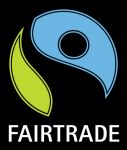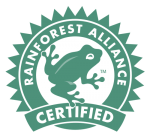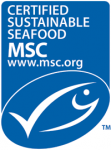A lot of different quality seals are on the products we use daily. It requires some time to figure out what each one of them mean. Ecological, sustainable production or fair trade – A quality seal should help the customer to orientate in the product jungle. Take a look at a lot of different seals here!
 Fairtrade Seal
Fairtrade Seal
Publisher: TransFair
Definition of Fair Trade: Transparency and Respect to create justice for the international trade. Better trade conditions and better social rights for producers will lead to a more sustainable development.
Aim of Fair Trade:
Support for producers (families) in Africa, Asia and Latin America. Improve the life of the families and their working conditions. Fair payment for products.
Size: 27.000 supermarkets participate and 800 World Stores
Standard: Fair Trade International Standards
Official Homepage: http://www.fairtrade.net/
Rainforest Alliance Certified Seal
Publisher: Non Government Organization formed by third parties in 1987
Farmers need to follow standards in order to be distinguished with the seal of the Rainforest Alliance. These standards include a social- and environmental management system, to protect ecosystems, wildlife, waters and to ensure a fair treatment and good working conditions for employees.
Aim of the Rainforest Alliance:
To protect the biodiversity and to ensure the rights and welfare of workers and their communitieses.
Size: In 64 different countries about 76.112.974 ha (188.079.255 acres) of forest have been certified
Standard: Rainforest Alliance Sustainable Agriculture Standard
Criticism: The Rainforest Alliance is alleged to help some bigger companies to greenwash their image with their seal. The seal shall give the impression to produce fair trade and sustainable products, although the Rainforest Alliance doesn’t meet the criteria for that.
Official Website: http://www.rainforest-alliance.org/
Marine Stewardship Council
Publisher: Representatives from fisheries management, trade, industry, environmental organizations and researchers
Labeling fish from sustainable resources
The aim of the Marine Stewardship Council
Reduction of global overfishing, ensure the wildlife in the oceans and restore the maritime fish population
Size: 18.000 certified Products in over 100 countries, 200 fisheries have been certified (March, 2013)
Standards: Marine Stewardship Council Standards
Official Website: http://www.msc.org/
